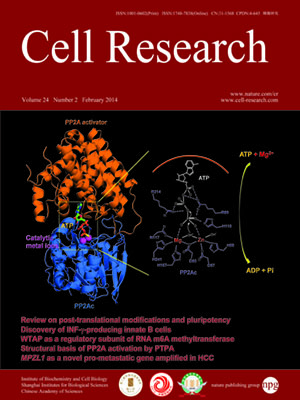
Volume 24, No 2, Feb 2014
ISSN: 1001-0602
EISSN: 1748-7838 2018
impact factor 17.848*
(Clarivate Analytics, 2019)
Volume 24 Issue 2, February 2014: 247-250
LETTERS TO THE EDITOR
Oligonucleotide-based targeted gene editing in C. elegans via the CRISPR/Cas9 system
Pei Zhao1,*, Zhe Zhang1,*, Hongmei Ke1, Yiren Yue1 and Ding Xue1,2
1School of Life Sciences, Tsinghua University, Beijing 100084, China
2Department of Molecular, Cellular, and Developmental Biology, University of Colorado, Boulder, Colorado 80309, USA
Correspondence: Ding Xue,(ding.xue@colorado.edu)
Technologies to achieve specific and precise genome editing, such as knock-in and knock-out, are critical for deciphering the functions of a gene and for understanding fundamental biological processes. Compared with the zinc finger nucleases (ZFN) and transcription activator-like effector nucleases (TALEN), which have been used for genome editing1, the Clustered Regularly Interspaced Short Palindromic Repeats (CRISPR)/CRISPR-associated (Cas) system has emerged as a new powerful tool for genome modifications. It has recently been adopted for genome editing in human cell lines2,3,4, mouse5, zebrafish6, C. elegans7,8,9,10,11,12, and plants13.
10.1038/cr.2014.9
FULL TEXT | PDF
Browse 2720


